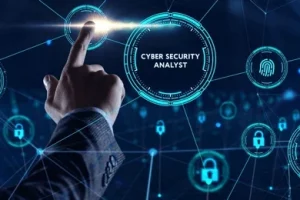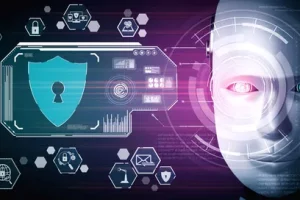How to Implement Cyber Threat Intelligence?
- Posted by 3.0 University
- Categories Cyber Security
- Date August 23, 2024
- Comments 0 comment
A Comprehensive Guide for Enhanced Security
In today’s fast-paced digital world, cyber threats are not considered future threats anymore; their occurrence is inevitable. Enterprises should be prepared not only to respond, but also to predict these threats.
Cyber Threat Intelligence (CTI) becomes functional in this way. If companies invest in CTI, they turn unalarming risk information into a stronger security strategy. Despite the fact that absolute security is impossible, CTI is a very useful tool.
Strategic analytics allows the organization to anticipate much of what is happening by tracking down potential connections before escalation.
This article delves into the establishment of a high-performing CTI program and explores pertinent discussions.
As has been frequently stated before, all the areas in which the model synchronizes with the company’s primary goals are reviewed, and some appropriate questions are given to be addressed.
How to Implement Cyber Threat Intelligence?
The Foundation of Cyber Threat Intelligence
Cyber Threat Intelligence (CTI) is a method or functionality for advanced tracking, analysis, and use of cyber threats to gain the pre-requisites of a balanced, preventive approach required to detect and respond efficiently to cyber threats.
The first step will, of course, be to collect the risk-threat data and analyse it.
Thus, cyber threat intelligence (CTI) becomes a process for using data about cyber threats to make digital security business decisions.
However, it is also important to learn about CTI initiatives before we enter the implementation phase.
The Difference Between Threat Data & Threat Intelligence
Here’s the mix-up between threat data and threat intelligence.
A perfect example would be whether the car is on the road and who is driving it.
What is the reason for the traffic?
The prior often refers to raw information consisting of potential threats, whereas the latter is a well-polished, analysed, and contextualized experience that comes from that data.
It’s like knowing a threat is coming but not knowing where, who, what, when, and, most importantly, why. The correct classification of these components in the CTI scheme is important in developing well-directed strategies.
Cyber Threat Intelligence Analysts’ Role
This analyst, essentially, tend to be currently at the heart of the whole CTI program and the main CTI professional in the company.
The task of reading and analysing threat data, identifying patterns from it, and producing detailed reports that assist the organization in making the best security decisions falls to CTI analysts.
They serve as the pillars who translate data into real information that is not only trustworthy but also relevant to the organization’s unique menace landscape.
Setting Clear Enterprise Objectives
A CTI program must be in line with the overall company’s goals and objectives in order to be effective.
This task primarily entails identifying key assets that require the most protection, understanding the dangers of threats affecting the assets, and setting the scope and objectives of the CTI program.
As a result, they can make their CTI efforts not only effective but also harmoniously related to the broader business objectives, ensuring long-term success.
Planning and Structuring the CTI Program
Professionally developed CTI typically begins with a plan that outlines the primary objectives, the appropriate tools and techniques, and the authority responsible for carrying out the work.
This schedule should also be reevaluated on a more moderate basis so that all the participants in the organization are aware of the newly coming needs and threats.
Integrating CTI with Existing Security Technologies
One of the issues related to CTI requires the organization’s existing security technologies to be part of the security program.
Such a combination has the advantages of real-time early warning and response to threats, allowing the organization to forecast and put off problems in the earlier stages before they can cause real harm.
Exploring Cyber Threat Intelligence Frameworks
Organizations use existing Cyber Kill Chain and MITRE ATTACK frameworks to connect CTI and security in their operations.
This approach, utilizing these frameworks that clearly decompose the cycle of vulnerability identification, analysis, and response, positions them as the guardians for organizations seeking to actively enhance their security posture.
The Cyber Kill Chain: A Deep Dive
The Cyber Kill Chain template depicts the various stages of a cyberattack, from small to large threats to information stealing.
Awareness of each stage of the kill chain can be a lot of help to organizations in making defences from the very beginning, which in essence would lower the probability of successful attacks.
Advanced Persistent Threats (APTs): The Silent Danger
The biggest issue that today’s companies are dealing with are Advanced Persistent Threats (APTs).
APTs are sophisticated, drawn-out attacks that involve a malicious attacker standing alone within a system for an extended period of time.
Practising this kind of attack is the main issue of the CTI program because organizations discover that these attacks typically compromise valuable data and efficiency, which would have severe impacts on the organization.
Building a Skilled CTI Team
Hiring capable, skilled professionals with the right combination of industry experience, certifications, and current expertise ensures the proper development of a Cyber Threat Intelligence program.
In this case, the successful establishment of a well-rounded team means that the recruiters will not only identify and attract the right people.
They must also specify goals and authorities so that the CTI program can effectively operate.
Data Collection and Processing: The Lifeblood of CTI
The data quality of a CTI program is the key to its success. Sources of data include internal logs, external threat feeds, and even the dark web.
However, once harvested, the data may only become extremely valuable if it undergoes thorough sorting, analysis, and cooking into actionable intelligence.
Threat Intelligence Sharing: A Collaborative Approach
Cyber threat intelligence is most efficient when distributed among the cybersecurity professionals of particular companies or universities.
Organizations that are partaking in such initiatives as threat-sharing communities and are able to establish relationships with other organizations can objectify a wider repository of threat intelligence and improve their APT identification and redressal processes.
Regular Review and Adaptation of the CTI Program
Constant vigilance is the prerequisite of every CTI program.
Periodical reviews serve as condition indicators for the program’s efficiency, revealing areas for improvement and allowing the program to adapt to new threats. This represents the accomplishment of the currently recognized process of change.
In this competitive environment, the company pushes its technology to the brink of obsolescence, leading to unnecessary expenditures.
Addressing Challenges in CTI Implementation
The introduction of CTI is not an easy task. There could be issues with collecting data, integrating the CTI program with the current system, or the program mismatching with business demands.
By predicting the hurdles and then resolving the arising issues, companies increase the chances of complete adoption of CTI.
Prospects for Cyber Threat Intelligence
CTI will undoubtedly continue to evolve, in addition to the recurring but distinct cyberspace attacks.
In addition, advanced technologies such as AI and ML will be at the forefront of threat detection.
Through analysis, companies will have the ability to capture potential attackers even before they strike.
Conclusion
The setting up of a Cyber Threat Intelligence program is one of the most important activities that a company will undertake to secure it from the imaginations of sophisticated cyber threats that are proliferating in the world.
Knowing the different parts of CTI, making clear objectives, and building a skilled team allow companies to translate raw danger data into a preventive warning that not only helps in crisis management but also ensures the entire security of the organization.
As cyber threats grow in complexity and variety, the CTI is taking on a central role in protecting the company’s most precious assets. (Source Courtesy: EC Council)
Await our next article on Cyber Threat Intelligence Feeds and Sources in continuation.
If you’re looking for an Ethical Hacking Course or intend to learn about Threat Intelligence or a Cybersecurity online certification course, register now at 3.0 University.
You may also like

How to Become a SOC Analyst?

How to protect seniors from online scams?

